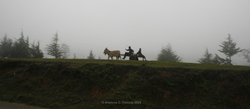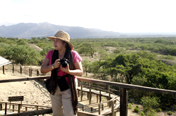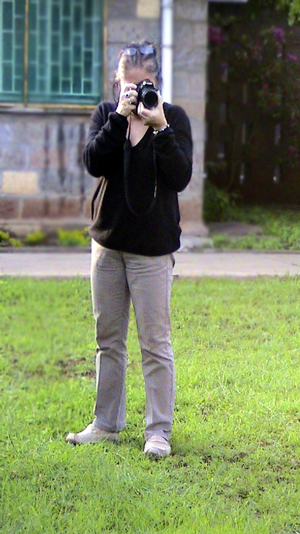Filipina shoots in Kenya
This article first appeared in the Picture Perfect pull-out section of the Manila Bulletin
3 June 2008

by Raffy Paredes
Like many others, Marlene C. Francia says that her fascination with pictures, especially with the photo essays from old Life magazines drew her towards photography.
And like many of us, she also dreamed of someday being in the National Geographic.
While she hasn’t yet worked for the prized magazine, Marlene has been fulfilling parts of her dream by doing documentary videos and shooting photographs in far-off Kenya since 2006. Officially, she’s doing short videos and taking photographs of renewable energy projects. "On the side," Marlene shares, "I get to indulge in wildlife and human interest photography. I hope to go deeper into people’s stories. Kenya is such a land of contrasts and diversity – from its peoples to its terrain and climate."
Marlene’s being an anthropologist accounts for her deep interest in the conditions and culture of other peoples. It has also defined her advocacies as she became immersed and involved in the life and struggle of the indigenous peoples as well as other marginalized sectors of society. As a videomaker and photographer, she tries to translate and capture concepts, advocacies, the-world-out-there images, both moving and still."
Born and bred in Los Baños, Marlene says she grew up exploring the creeks, hills, and fields of Mt. Makiling. In the meantime, her schooling at the University of the Philippines Los Baños campus gave her a lifelong interest in science. At the University of the Philippines Diliman, she studied anthropology and communication.
She started taking pictures at 15 when she discovered her father’s fully manual Canonet. However, it was her mother who taught her the basics of photography. Throughout the years, Marlene says that she has always had an SLR. She took photographs as a hobbyist and volunteered as a photographer when she started working. She also did soundslides for a time. She shares: "My father used to complain that maybe I was just wasting film judging by the cartons of negatives and photos and transparencies that I would periodically lug to the family house, there to seemingly gather dust."
But Marlene’s "love affair" with photography took a back seat when she got into documentary videos in the ‘80s. "I didn’t take photographs for many years," she reveals, "and instead concentrated on mastering the film language." It was only early last year upon acquiring her first DSLR that she began shooting photographs again.
On her choice and presentation of subjects, Marlene explains that as a very visual person, she just enjoys taking photographs. "It could be of people; it could be of wildlife; it could be of landscapes. It could have a lot of action and movement in it, like in a rally or picket line, or it could be as serene as a still life photograph of a beautiful bloom."
She adds, "I’m always interested in capturing the beauty of line, color, and light, contrast and similarity, irony and humor, emotion and action, the human interest story, the joy of life and its struggles. I like evocative images." And Marlene hopes her fascination with the
possible stories that can come from an image will stir the multiple meanings it can have for different people.
"I like people to react to my photographs," she shares, "whether they laugh or get bemused or fascinated or be disturbed into a form of action. If people learn something new from my photographs, I’m happy."
Aware of how images and documentaries have influenced recent history, Marlene believes, however, that images alone cannot bring about change. She states: "Images can be powerful tools for raising awareness on issues if these are used hand in hand with organizing."
For the starting enthusiast, Marlene shares some tips on getting the most out of a photograph. "Look for subjects that interest you and that you can focus on. Look for humor, irony, human interest, subtexts, contrasts, similarities, patterns aberrations, insights. Let your picture tell a story and expand human understanding." She also advises the newbie to always respect the subject and practice patience. On the technical know-how: learn the language of images, the rules of photography, and know your equipment. Finally, she advises, have fun.
For more of Marlene C. Francia (documentary videomaker, photographer, anthropologist, amateur naturalist and birder, frustrated blogger and web dabbler, carrot cookie baker, avid traveler, voracious reader, and occasional gardener) and her photography, please visit www.marlenefrancia.imagekind.com and flickr.com/photos/marlenefrancia. |



